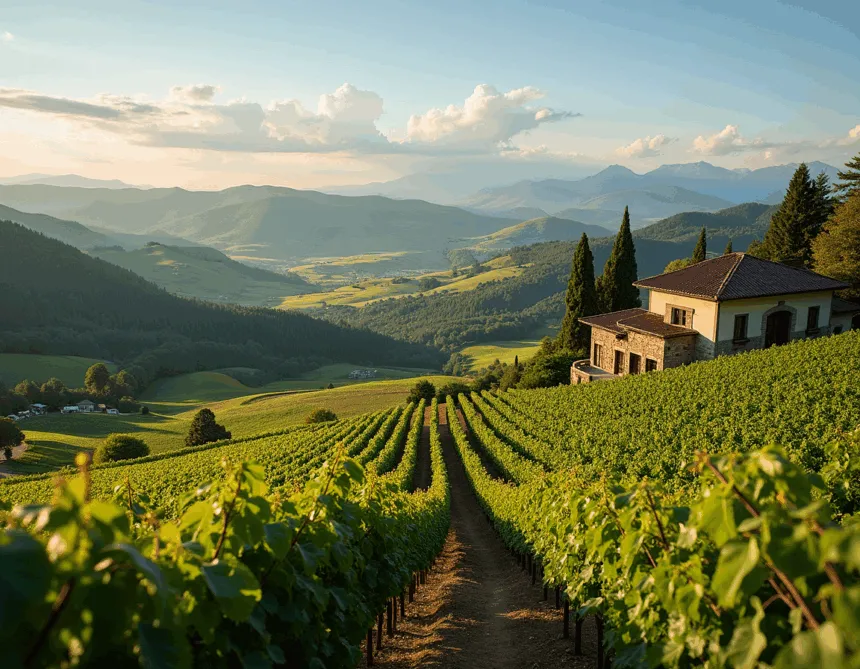Hungary, often recognized globally for its exquisite sweet Tokaji Aszú, boasts a far richer and more diverse wine landscape than many realize. From crisp, mineral-driven whites to robust, full-bodied reds, the country’s 22 wine regions offer a captivating journey for any wine enthusiast.
Hungary wine tasting is not merely about sampling delicious vintages; it’s an immersion into centuries of winemaking tradition, a discovery of unique indigenous grape varieties, and an encounter with the passionate individuals who are shaping Hungary’s vinous future.
The history of Hungarian winemaking stretches back to at least Roman times, with evidence of extensive vineyards by the 5th century AD. Following the Magyar invasion in 896, winemaking continued to flourish, incorporating new grape varieties from Italy and France. The fame of Tokaji Aszú spread through European royal courts, earning it the moniker “The King of Wines and the Wine of Kings” from Louis XIV. Despite setbacks like the phylloxera epidemic in the late 19th century and the challenges of the Communist era, Hungarian viticulture has shown remarkable resilience, evolving into a dynamic industry that expertly balances tradition with modern innovation.
Exploring Hungary’s Key Wine Regions
Hungary’s diverse geography, encompassing plains, hills, and mountains, contributes to its varied microclimates and soil types, creating distinct personalities for its wines.
Tokaj: No exploration of Hungarian wine is complete without a deep dive into Tokaj. A UNESCO World Heritage site, this region in Upper Hungary is legendary for its noble rot-affected sweet wines, particularly Tokaji Aszú. The unique combination of volcanic soils, the Bodrog and Tisza rivers creating morning mists, and the Furmint and Hárslevelű grape varieties, are the magic ingredients. Beyond the iconic sweet wines, Tokaj is increasingly gaining recognition for its dry Furmint, which exhibits remarkable minerality and complexity. A tasting in Tokaj often involves descending into ancient, mold-covered cellars, offering an atmospheric backdrop to understanding these liquid gold treasures.
Eger: Situated in Upper Hungary, Eger is a region steeped in history and famous for its red blend, Egri Bikavér, or “Bull’s Blood.” Legend has it that the wine’s name originated in the 16th century when Turkish soldiers believed Hungarian defenders drank bull’s blood for strength. This robust, spicy, and often tannic red blend typically features Kékfrankos (Blaufränkisch) as its backbone, complemented by varieties like Kadarka, Cabernet Sauvignon, and Merlot. Eger also produces elegant whites, including local varieties and international grapes like Pinot Gris. The Szépasszony-valley (Valley of the Beautiful Woman) near Eger is a popular spot for wine tasting, with numerous cellars carved into the hillsides.
Villány: Located in Southern Transdanubia, Villány is renowned for its bold, full-bodied red wines, often referred to as “the Bordeaux of Hungary.” The region benefits from a warm, sub-Mediterranean climate, ideal for cultivating Bordeaux varieties like Cabernet Franc, Cabernet Sauvignon, and Merlot. Villányi Franc, a designation for top-tier Cabernet Franc from the region, is particularly celebrated for its elegance and aging potential. Portugieser (formerly Kékoportó) is another important red grape here, known for its softer tannins and fruity profile.
Lake Balaton Region: Surrounding Central Europe’s largest lake, the Balaton region is celebrated for its refreshing white wines. The volcanic soils, especially in areas like Badacsony and Somló, impart distinctive mineral notes. Olaszrizling (Welschriesling) is the dominant white grape, producing crisp, aromatic wines with notes of almond and green apple. The rare and age-worthy Juhfark grape, primarily found in Somló, offers a unique, intensely mineral experience. The Balaton Uplands also see experimentation with red varieties, adding to the region’s diverse offerings.
Szekszárd: Another significant red wine region in Southern Transdanubia, Szekszárd is often associated with more elegant and spicier red blends than Villány. Kékfrankos and Kadarka are key players here, creating wines with vibrant acidity and nuanced fruit. Szekszárd also produces excellent Merlot and a unique “Siller” wine, a deep rosé that blurs the lines between red and white.
The Hungarian Wine Tasting Experience
A Hungarian wine tasting is an opportunity to connect with the country’s soul. Many wineries, from large estates to small, family-run operations, offer guided tours of their vineyards and cellars, often culminating in a tasting paired with local delicacies. These experiences frequently delve into the history of the region, the winemaking philosophy, and the unique characteristics of each grape variety.
Beyond the formal tastings, Hungary’s wine culture encourages casual enjoyment. “Fröccs,” a popular Hungarian spritzer made with wine and sparkling water, is a common sight in summer, offering a refreshing way to experience local wines. Pairing Hungarian wines with traditional dishes like goulash (often complemented by a robust Egri Bikavér) or foie gras (a classic match for sweet Tokaji Aszú) elevates the culinary journey.
